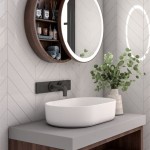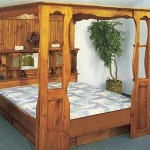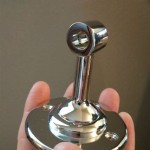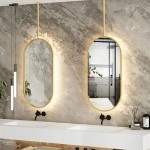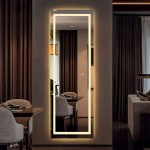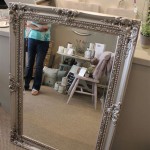Victorian Free Standing Mirror
Victorian free-standing mirrors, also known as cheval mirrors or cheval glasses, represent a distinctive segment of antique furniture. These elegant pieces, popular during the Victorian era (1837-1901), served both functional and decorative purposes. Their design reflects the era's aesthetic sensibilities, often incorporating ornate carvings, elaborate frames, and high-quality materials. This article explores the key characteristics of Victorian free-standing mirrors, their historical context, and their enduring appeal in modern interiors.
Key Characteristics of Victorian Free Standing Mirrors
Victorian free-standing mirrors are identifiable by several key features: *
Full-length reflection:
Their primary function is to provide a full-length view, making them essential for dressing and personal grooming. *Freestanding design:
Unlike wall-mounted mirrors, these pieces stand independently on a frame and base, allowing for mobility and placement flexibility. *Adjustable tilt:
Many feature an adjustable tilting mechanism, enabling users to customize the viewing angle. *Ornate frames:
Victorian design emphasized ornamentation. Frames often feature intricate carvings, decorative moldings, and embellishments like inlaid mother-of-pearl or carved floral motifs. *High-quality materials:
Common materials included mahogany, walnut, rosewood, and sometimes even ebony for high-end pieces. Mirrors were typically made of high-quality glass with minimal distortion. *Sturdy base:
The base of the mirror is designed to provide stability and balance, often featuring claw feet, scrolled supports, or other decorative elements. *Size and scale:
Victorian free-standing mirrors are typically substantial in size, reflecting the era's preference for grand and imposing furnishings.Historical Context and Significance
The popularity of free-standing mirrors during the Victorian era can be attributed to several factors: *
Increased prosperity:
The Industrial Revolution led to increased wealth among the middle classes, allowing them to acquire decorative and functional items like free-standing mirrors. *Emphasis on personal appearance:
The Victorian era placed great importance on outward appearance and social etiquette. A full-length mirror became a necessary tool for maintaining a polished and presentable image. *Advancements in mirror-making technology:
Improvements in glass production made larger, clearer mirrors more accessible and affordable. *Influence of design movements:
Various design movements, such as Gothic Revival, Rococo Revival, and Aesthetic Movement, influenced the stylistic details of Victorian furniture, including free-standing mirrors. *Changing social dynamics:
The rise of a more image-conscious middle class contributed to the demand for elegant and stylish furnishings, including mirrors, which served as status symbols.Materials and Construction
The materials used in constructing Victorian free-standing mirrors reflect the era's focus on quality and craftsmanship: *
Wood:
Hardwoods like mahogany, walnut, and rosewood were favored for their durability and beauty. The wood was often carefully selected for its grain and figure. *Mirror glass:
High-quality glass was essential for producing a clear, undistorted reflection. Techniques like silvering and mercury backing were employed to create reflective surfaces. *Metal accents:
Brass, bronze, or other metals were often used for decorative accents, hardware, and the tilting mechanism. *Inlays and veneers:
Decorative inlays of mother-of-pearl, bone, or contrasting wood veneers were sometimes used to enhance the visual appeal of the mirror frame. *Carving and ornamentation:
Skilled craftsmen created intricate carvings, moldings, and other decorative elements to embellish the frame and base.Victorian Free-Standing Mirrors Today
Victorian free-standing mirrors continue to be sought-after items in the antique market and interior design: *
Antique value:
Original Victorian free-standing mirrors can be valuable antiques, particularly those in good condition with intricate detailing and high-quality materials. *Decorative appeal:
Their elegant design and ornate details make them a striking addition to various interior styles, from traditional to eclectic. *Functionality:
They remain practical and functional items, providing a full-length view for dressing and grooming. *Versatility:
They can be incorporated into bedrooms, dressing rooms, hallways, and even living spaces as decorative focal points. *Investment potential:
Authentic Victorian free-standing mirrors can appreciate in value over time, making them a worthwhile investment for antique collectors.Caring for a Victorian Free-Standing Mirror
Preserving the beauty and value of a Victorian free-standing mirror requires careful maintenance: *
Dusting:
Regular dusting with a soft, dry cloth is essential to prevent the buildup of grime and dust. *Cleaning:
Avoid using harsh chemicals or abrasive cleaners on the frame or mirror surface. A damp cloth with mild soap is usually sufficient for cleaning. *Handling:
Handle the mirror with care, avoiding sudden movements or impacts that could damage the frame or glass. *Storage:
If storing the mirror, choose a dry, climate-controlled environment to prevent damage from humidity or temperature fluctuations. *Restoration:
For significant damage or restoration needs, consult a qualified antique furniture restorer.Identifying Authentic Victorian Free-Standing Mirrors
Distinguishing authentic Victorian pieces from reproductions requires careful observation: *
Construction techniques:
Examine the joinery and construction methods. Hand-crafted details and traditional woodworking techniques often indicate an older piece. *Materials:
Look for the use of high-quality hardwoods and period-appropriate materials. *Patina and wear:
Authentic antiques will typically exhibit some signs of age and wear, such as patina on the wood or minor imperfections in the mirror glass. *Hardware and fittings:
Examine the hardware and fittings, which should be consistent with the Victorian era. *Provenance:
If available, provenance documentation can help verify the age and authenticity of the mirror.
Madie Victorian Standing Mirror Full Length Furniture Home Living Decor Mirrors On Carou

Victorian Leaning Decorative Wall Mirror Furniture Home Living Decor On Carou

Madie Victorian Standing Mirror Full Length Furniture Home Living Decor Mirrors On Carou

Madie Victorian Standing Mirror Full Length Furniture Home Living Decor Mirrors On Carou

Standing Mirror Victoria Furniture Home Living Decor Mirrors On Carou

Standing Mirror Victoria Furniture Home Living Decor Mirrors On Carou

Cheval Mirrors Foter Floor Mirror Victorian Wall

Victorian Style Mirror Original 388 160cm X 45cm Furniture Home Living Other On Carou

Rosalie French Victorian Wall Mirror Mount Free Standing Teakco

Antique English Victorian Mahogany Floor Standing Cheval Mirror Circa 1860 Yola Gray Antiques Interiors


